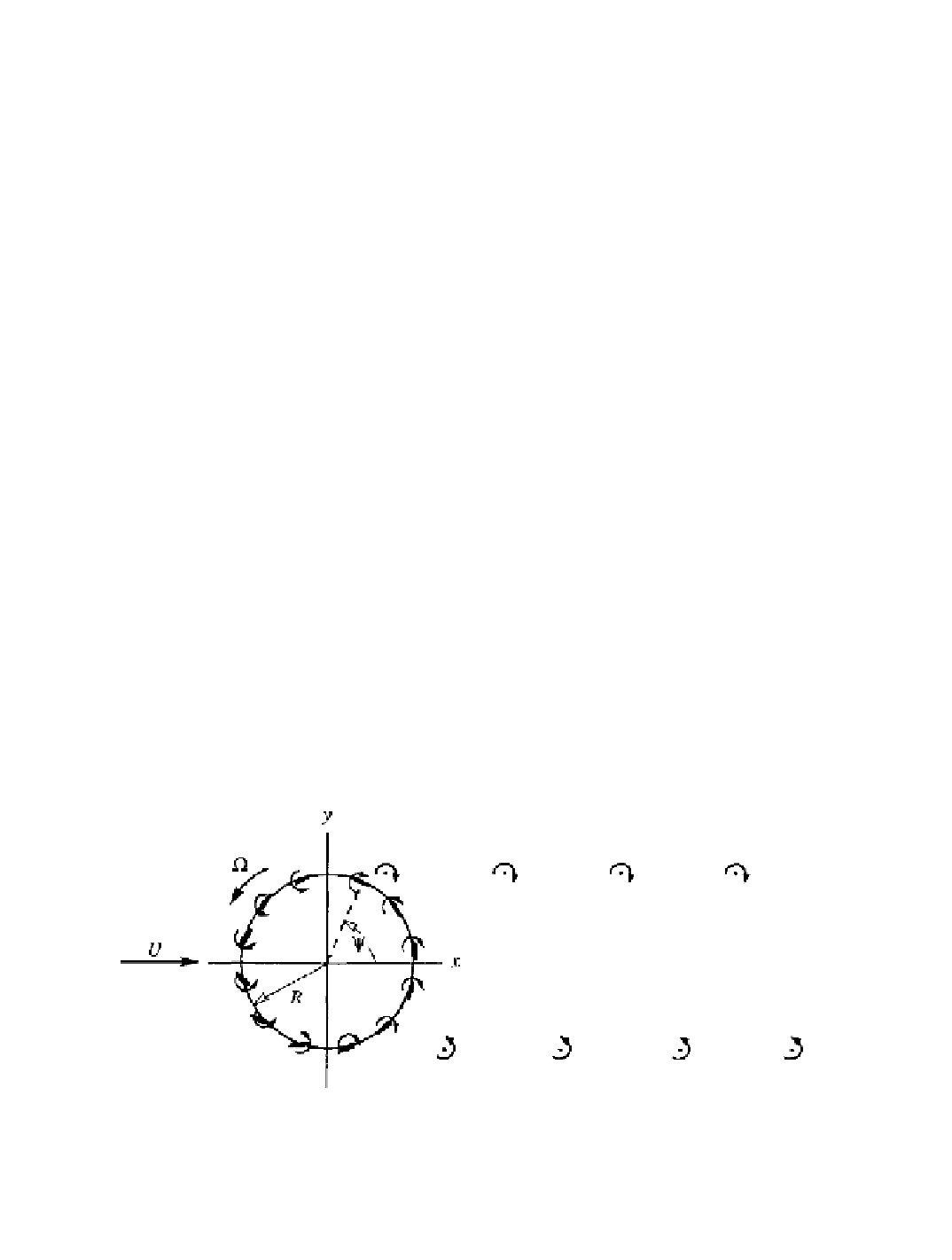Environmental Engineering Reference
In-Depth Information
ior. Streamtube approaches have met with modest success in predicting the overall torque
and thrust loads on Darrieus rotors. Additionally, the computer time needed for streamtube
computations is much less than that for any other approach.
Fixed-wake vortex models use a vortex sheet wake that is locally independent of time.
Forces are determined from circulation using the Kutta-Joukowski law. The fixed-wake vor-
tex analysis has a distinct advantage over streamtube methods below stall, in that it has the
ability to identify the
crosswind-induced flow
. Its computational time requirements exceed
those of streamtube models, but are at least of the same order.
The most complete and accurate method of analysis that has been developed for pre-
dicting the aerodynamic behavior of a Darrieus rotor is the
free-vortex
approach. The rotor
wake is modeled by discrete, force-free vortices, each of which is convected downstream at
a velocity determined by induced velocities from the rest of the system. Unfortunately, the
free-vortex approach is also the most complex and has several other disadvantages:
-- Power and load values are approached asymptotically from above as the wake length
is increased towards infinity. As a result, the practical requirement of a finite-length
wake results in predictions that are too high.
-- Since the wake moves very slowly at high tip-speed ratios, it is always easier to
analyze rotors operating at low tip-speed ratios.
-- Overall, free-vortex analysis is quite expensive to perform.
Limiting VAWT Performance
We will first consider the performance limit of a
giromill rotor
, a design also proposed
by Darrieus. A giromill consists of straight, vertical, rectangular blades rotating about a ver-
tical axis. The blades are
articulated
in pitch to maximize the extraction of energy from the
wind. A necessary condition for maximum energy extraction is that the far-wake velocity
be uniform. By virtue of its articulated blades, a giromill will have higher performance than
a fixed-pitch Darrieus rotor. Therefore, a performance limit for a giromill is also an upper
bound for the performance of a Darrieus VAWT.
Figure 5-32 illustrates the development of an actuator disk model of a giromill. In this
schematic plan view,
B
blades (
B
>>
1
) of chord
c
are situated around the circumference of a
rotor of radius
R
. As a blade moves around the circle, its pitch angle is modulated to keep the
Figure 5-32. Schematic plan view of a vortex-sheet model of a giromill flow field.
[Wil-
son 1978]

Search WWH ::

Custom Search